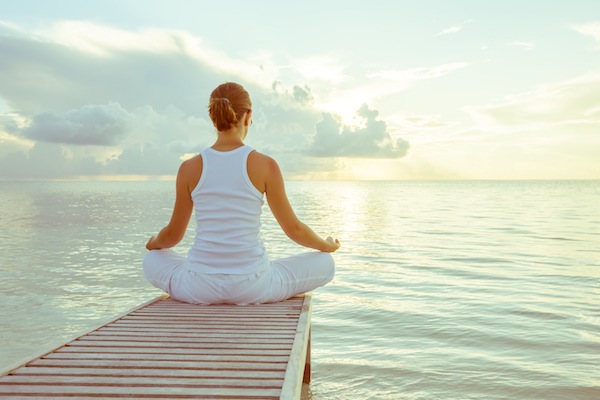FAQFrequently Asked Questions
There are many questions you may have before beginning a meditation program. An introductory talk, or an introductory program, is a perfect way to explore these questions. Additionally, learning the many benefits meditation offers, will enhance your commitment to your new meditation practice. |
How will I feel when I begin to meditate?
|
Each individual will experience meditation in a unique way. Some find it effortless to sit for 20 minutes, while others might feel restless. Know that the restless feeling will subside with regular practice. If you do find yourself having difficulty sitting for the full 20 minutes, you can begin with 10 minutes and work your way up. With practice, meditation will become easier and you will feel very comfortable and good during the session. Soon, you’ll begin to look forward to your meditations.
|
I'm afraid I won't be able to quiet my mind? |
The mind will be active during meditation, especially in the beginning, this is natural. The DASA technique gently guides you to a quieter mind without effort. With time and patience, you'll find your meditations will offer deep and profound rest.
|
I'm concerned my busy schedule won't allow for the time needed to meditate. |
To put it into perspective, there are 1,440 minutes in each day. Meditation takes just 40 minutes (20 minutes twice a day). Granted, meditation takes discipline, but once you establish your schedule, it will naturally become part of your routine. Within a relatively short time, you'll feel relaxed, rested, and refreshed. Most meditators agree that the practice boosts energy and clarity, allowing them to easily recapture that 40 minutes with a more productive day. Take a good look at how you spend time. Meditation is a healthy and sensible tradeoff for television or social media.
|
Why is a silent-mantra used? |
Silent-mantra meditation is the oldest form of meditation. It has been used for over 5,000 years. The mantra (used silently) is a vehicle that delivers a deep state of tranquillity, relaxation, and balance. Access to this deep state of stillness offers freedom from the limitations caused by stress while delivering an abundance of mind-body health benefits.
|
How should I prepare for the initial meeting? |
Although there are no specific requirements, we suggest you dress comfortably, wear loose layered clothing. The metabolic rate naturally lowers when you are in a state of rest, so you may feel chilly. Bring a sweater or small throw to your session, so you will be comfortable during your meditation.
|
My home isn't perfectly quiet. I worry about disruptions during meditation. |
While a quiet place is the most ideal in the beginning, the DASA practice trains us to accept noise and interruptions around us as part of the meditation. With time, seasoned meditators can meditate just about anywhere. If you do need to pause your meditation, resume the meditation and add 5 minutes to your time.
|
How often should I plan to practice?
|
DASA Meditation recommends a goal of practicing twice a day, no more, no less, for twenty minutes each session. Allow additional time to come out of the meditation slowly. This will deliver optimal benefits. Set a routine so the schedule is harmonious with your daily life. It’s important to be consistent; that’s when you’ll notice improvement.
|
What if I miss a meditation?
|
If you happen to miss a meditation, don’t be discouraged. You can simply begin your routine the following meditation. Remember, the benefit of meditation is cumulative. Strive for two times each day - no more, no less. Many new meditators notice the difference within eight weeks, some in as little as one week.
|
I’m not flexible enough to sit in the traditional lotus position. Is there an easier sitting position? |
DASA Meditation recommends the following four sitting positions—the style you choose should be selected for comfort:
1.) Sitting upright in a chair with feet on the ground - Recommended for the highest level of comfort. A perfect choice for both beginners and seasoned meditators - flexibility is not required. 2.) Quarter lotus position - Some flexibility is required. 3.) Half lotus position - Slightly more relaxed than the full lotus. 4.) Full lotus position - Recommended for those who are very flexible. There are simple ways to make each of these sitting positions more comfortable. Your meditation instructor will help you select the proper position, and offer tips to improve comfort. |
When is a good time of day to meditate?
|
The best time of day depends on the individual, and everyone is unique. Use the schedule that allows you to stay with the program. We suggest a morning meditation (pre-caffeine) to provide an optimal start to your day. For the second meditation, try a late afternoon meditation to give yourself a boost of energy, or just before dinner. Nighttime meditation can create a surge of energy for some, while others find a late meditation contributes to a deep and restful sleep. We do not suggest meditating just after a heavy meal.
|
|
Will my pet(s) disturb my meditation?
|
Usually, pets will not disturb your meditation. They will most likely want to be close. If you are comfortable with that, allow them to join you. They usually settle in quietly and relax. Pets seem to enjoy the experience. It is quite possible they feel the good vibes. :)
|
Learn more by visiting this DASA blog article.
The Expert Guide on Meditation: How to Avoid 9 Common Obstacles
The Expert Guide on Meditation: How to Avoid 9 Common Obstacles



